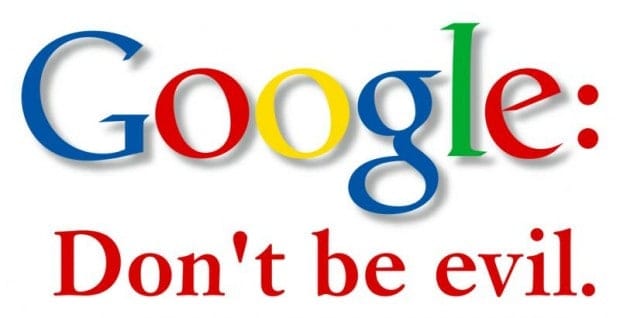As the US has come down from high inflation over the past year, a gulf has opened between economists, triumphant over low inflation and no recession, and consumers, who still feel financially precarious. Economists, looking at the data, wonder why consumers can’t appreciate how good things are. Consumers, for their part, accuse economists of using out-of-touch metrics, or – worse – trying to paint a rosy picture for the presidential reelection.
Enter Bolhuis, et al., with a new working paper to explain the disconnect. True, the Consumer Price Index (CPI) shows inflation back down to approximately normal. But, they argue, a big part of consumer sentiment boils down to the costs of debt service and borrowing, which remain very high by the standards of the past few decades.
Oddly, borrowing and debt service costs aren’t included in the CPI at all. Some have even suggested this is a deliberate omission to make inflation look lower than it “really” is (and as evidence for this, point to the fact that the BLS changed the definition in 1983 to exclude them). So does it make sense to include borrowing costs in the CPI, as Bolhuis et al. propose?
What Is the CPI Anyway?
The Consumer Price Index is one of the most popular price indices, usually thought of as tracking the “cost of living”. It’s used for things like adjusting tax brackets and Social Security payments over time, as well as tracking the impact of inflation on consumers.
But “cost of living” can mean any number of things, so let’s be more precise. The CPI is supposed to track, not prices in general, but the cost of consumption – as opposed to investment.
“Cost of consumption” is a very different understanding of “cost of living” than “typical household expenses”. In the first place, if our metric is consumer welfare, we’re interested in forward-looking costs of prospective consumption decisions, not backward-looking expenses. More practically, there are two basic problems that separate these understandings: (1) Not all household expenses are consumption, and (2) not all household consumption is an expense, even though it does have a cost.
So What’s Consumption?
In economics, “consumption” means the satisfaction of present needs – again, as opposed to investment, which is spending today to satisfy future needs. So the basic question the CPI asks is: how costly is it, in money terms, to meet your current needs? In large part, you can track this by tracking the prices of consumption goods. Food, entertainment, services like haircuts, and so on.
But this runs into problems with big-ticket items like cars and houses, what economists call consumer durables. When you buy a house, you don’t consume it all at once; you hopefully enjoy its services over a very long period of time. And the price you pay for it today reflects, not just your current need for shelter, but also your expected need for shelter all the way into the indefinite future. In other words, a house is an investment, with all the uncertainty that entails.
So it clearly doesn’t make sense to include house prices in the CPI. It’s just a different sort of thing. But now we’re faced with a double problem: (1) Since the future does eventually turn into the present, we do want to include the cost of shelter in the CPI. But (2) what’s the cost of consuming the services of something you already own?
With a little bit of opportunity cost logic, we can solve this problem by using rental prices instead of house prices. After all, even if you own your own home, the opportunity cost of living in it yourself, is the income you could have made renting it. So an increase in rent prices really does increase the cost of consumption, even for homeowners who don’t register the expense. In general, consumer durables are factored into the CPI, not with their sale price, but with their user cost – that is, with an explicit or implicit rental price. (Curiously the BLS does not do this for cars, even though logically it ought to use lease prices rather than sale prices. Nevertheless, Bolhuis et al. show that this matters much less than for shelter, which comprises over 1/4 of the CPI’s weight)
Borrowing Costs and Investment Returns
So it’s worth thinking about how the CPI would account for changes in the price of consumer durables like houses. If house prices rise, and rental prices rise proportionally – a “neutral” inflation – then increases in house prices and the cost of housing services have increased proportionately, fully reflected in the CPI.
If house prices rise faster than rent prices, however, that’s a capital gain – an increase in the wealth of homeowners (and a decrease in the wealth of potential homebuyers). Importantly, a capital gain is an unpredictable ex post change in wealth, and not a change in the cost of forward-looking consumption. In terms of how it affects consumer decisions going forward, it’s a very different beast.
This distinction doesn’t change if money was borrowed to finance that investment. If the interest rate on a loan rises, that’s an ex post capital loss on an investment, and not a change in the cost of forward-looking consumption. The interest rate, fundamentally, is the price of investment, not of consumption, and any indirect effects on the price of consumption are taken into account in the CPI.
What’s the Takeaway?
Now, this isn’t to say debt service and borrowing costs don’t matter. Capital gains and losses do affect consumers’ wealth – and that matters: wiping out wealth can still seriously impact standards of living, even if the cost of consumption stays the same.
So what should be the lesson of Bolhuis et al.? For the typical economist, the main question on how inflation affects consumers is whether incomes rise faster or slower than prices. Often they’re slower, meaning consumers become worse off in real terms, at least temporarily. But in addition to that, Bolhuis et al. point us to the fact that policy actions to contain inflation – even successful ones! – can have serious effects on the types of investment that consumers are likely to do, which can be an important factor in the political dynamics of inflation.
This is an important point, and should not be underrated. Nevertheless, it’s also important to have a measure that corresponds roughly to the cost of consumption in a forward-looking sense, because that’s the major factor in consumer decisions going forward, and in estimating the value of money over time in terms of the needs it can satisfy. (And indeed, the 1983 redefinition of the CPI was not a PR move at all, but the result of rigorously grappling with these sorts of conceptual issues as financial innovation made the old CPI less and less workable.)
Cameron Harwick is a monetary economist and Associate Professor of Economics at SUNY Brockport. Follow him on Twitter at @C_Harwick.
















